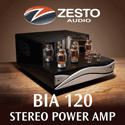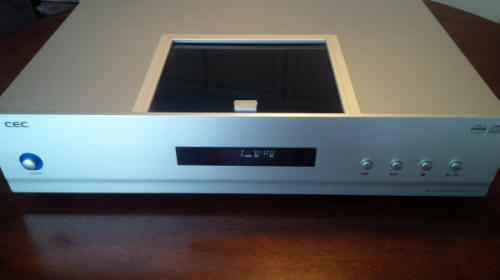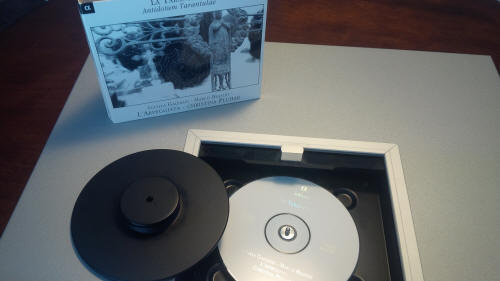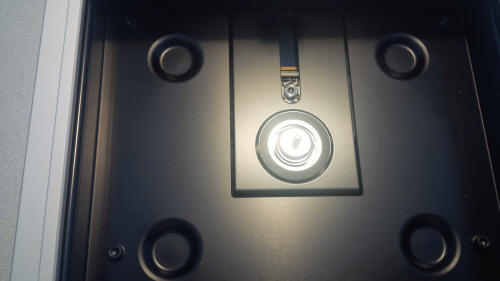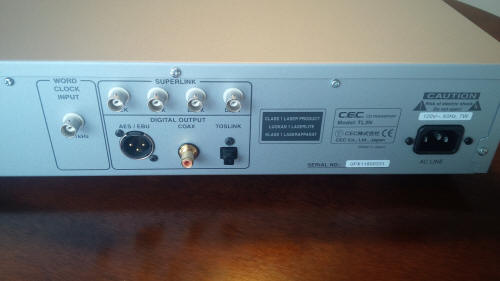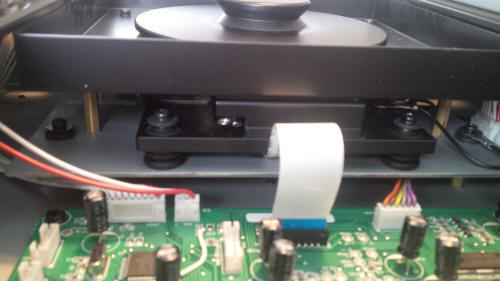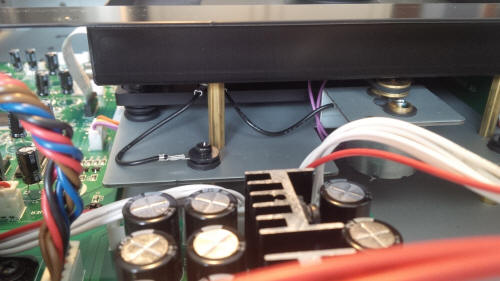|
|
You are reading the older HTML site
Positive Feedback ISSUE 75
cec TL3N CD Transport and Some Thoughts on Computer Audio as reviewed by Paul Candy
I rarely play CD's these days. I have about 200 left in my den (the rest are stored away in the basement) and almost all of my new music purchases are downloads. Therefore my transport, a CEC TL51X, sits idle most days. So then why review a CD player/transport? Everyone knows physical media is dead and the future is file based playback and streaming. Maybe so but there is a silent minority (or majority?) of audiophiles that want nothing to do with computers or streamers when it comes to listening to music. After expending considerable effort over the last three years trying to obtain decent sound from a computer based front end I can certainly appreciate why many refuse to ditch the ol' silver biscuit. I believe there are three basic reasons why. Simplicity is one. I'm not aware of any server or computer music system that's easier than or as intuitive to operate as a CD player. If there is, somebody send me one. Push open, drop the disk, push play. That's it. With a computer or server you've got a lot of work ahead of you before you can enjoy your music. I can't imagine my parents (in their late 70's) futzing with ripping CDs or trying to play music on a server or computer. Another reason is perceived superior sound quality. I think the potential for great sound on a computer or server certainly is there but there are still opportunities for significant improvement. It took me three years of tweaking and experimenting to finally gain some measure of the involvement and release that I hear with physical media and I'm not just talking about using audiophile playback programs such as JPlay, XXHighend, Amarra, Audirvana, and so forth. It's also tweaking the inner workings of Windows or Mac OS. Think hard drives and power supplies don't make a difference? Think again. And while high-resolution audio be it PCM or DSD is certainly enticing, I can give you a lengthy list of high-rez titles that are sonic excrement. You can't polish a turd regardless of bit depth and/or sampling rate.
Reliability is another possible reason. What if your computer crashes or hard drive fries? Forgot to back up your music? Too bad, so sad. Many believe streaming services may offer the ideal solution for everyone. No ripping or managing a library. Just pray your streaming service doesn't go belly up. Oops, there goes your music. Sorry. If you look after your discs and records, they should last forever. Sure you can buy an optimized dedicated music server and even pay someone to rip your discs but the asking prices border on rape as far as I'm concerned and you're generally limited to that manufacturer's playback program or some lousy shareware and you'll probably still need a computer to edit metadata and purchase/download new music. There's rarely a disc I have ripped or music that I have downloaded that didn't require editing of metadata. One can spend as much time managing a music library as listening to music. Regarding ripping discs, I have noted variable sound quality compared directly to conventional disc playback. For some reason a good number of my CDs sound more natural, meaty and immersive on my CEC TL51 or my loaner TL3N than dematerialized on my PC. After a considerable amount of OCD comparisons I have noticed a trend. Generally speaking older CDs sound better played on a CD transport/player than computer. I can't prove it but I suspect manufacturing quality of compact discs was generally superior in the earlier days of digital than today. I look at some of my older discs, Denon for example, they appear perfect; spindle hole dead center, no pin holes or smearing or discolorations on the business side. Grab pretty much any recent disc and you'll see pin holes, weird discolorations and off center spindle holes. One would think that the error correction mechanism of CD players work far harder on these discs than older ones. More error correction equals more jitter, thus musicality suffers. Perhaps. It's just theory on my part. Regardless, I have all but given up ripping the rest of my CD collection: it's too much damn work and the variable sound quality drives me nuts. Better to have a solid sounding CD transport in my opinion and use the computer or server for high resolution and Red Book downloads. So while I have seemingly unzipped my fly on file-based audio, now that I have my PC front end sorted out I have finally embraced it. For me the pros outweigh the cons. I love the convenience of purchasing and downloading music in mere minutes and having my music collection at my fingertips. Often downloads are far less expensive than their CD counterparts sometimes even high-resolutions versions are cheaper than the CD. I also don't have the compact disc's variable pressing quality. On the other hand I'd like to see the issue of providence addressed by sellers of downloadable music as well as more consistent availability of liner notes. Correct metadata is still a problem. Having said all that, I do fully understand why many audiophiles are not prepared to ditch their disc players just yet. Some may even be looking for a new machine. The choices are indeed becoming slimmer each year but one brand still stands tall in the field of compact disc players.
This leads us to the subject of today's review, the
CEC TL3N. Initially known for their OEM turntable work, Japanese firm CEC
found itself one of the largest manufacturers of CD drive mechanisms by the
late eighties. Therefore I suppose it shouldn't have come as a shock when
some bright spark married the two technologies together and in 1991 CEC
introduced the world's first belt-drive CD transport, the TL1. Fast forward
today and CEC belt drive players are highly coveted by many music lovers. As most CD players use a motor to directly drive the disc, vibrations, however, minute, will couple to the disc. The TL3N's low-torque spindle motor drives the disc via a rubber belt. CEC claims that any micro-vibration, resonance or electronic noise caused by the motor is either absorbed or completely blocked, thus reducing jitter. The spindle is also mounted on a four pillar sprung platform while the laser sled and spindle motors are separately mounted on a hefty baseplate. Essentially the TL3N replaces the TL51X (which I purchased a few years ago). Apart from a few minor cosmetic differences both units appear identical. Both are top loaders with a sliding door and a heavy aluminum puck for securing the disc. The difference lies under the hood as the TL3N uses a dual belt mechanism rather than the TL51's single belt. With the TL3N, as with CEC's top-of-the-line TL0X, the second belt drives the laser mechanism thus eliminating yet another direct mechanical pathway for evil vibes and well as electro-magnetic interference. The electronics have also been improved over the TL51X. The front panel features a blue LED display and four buttons which control the transport. The top mounted door slides back to reveal the spindle and the heavy disc puck that is placed on top of a CD. For North American customers, CEC distributor Mutine ships the larger puck used in CEC's upscale TL1N. While Mutine believes the stock puck is fine, the larger puck which covers the entire surface of the disc is more effective at damping vibrations and is completely compatible with the TL3N's drive suspension.
The TL3N sports a good assortment of outputs including AES/EBU (XLR), coaxial, toslink and CEC's proprietary Superlink system which transmits audio signals and clock signals separately to minimize jitter via several 75 Ohm BNC jacks. However, one requires a matching CEC DAC to utilize Superlink. The remote is of the cheap plastic variety one normally finds with budget disc players. The TL3N weighs in at a solid 10kg. Looking inside I noted a multilayer sub-plate under the transport mechanism and circuit board, no doubt to address vibration and resonance issues. The TL3N is available in silver and black.
What attracted me to CEC's transports and in particular the TL51X was its natural, easy flowing way of delivering music but minus the etch and tonal bleaching so commonly heard in digital. Its excellent sense of rhythmic surefootedness and its reproduction of bass was far more natural and real sounding than I usually hear and was blessedly free of the synthetic droid bass that is so often misconstrued as good. I have also heard the TL51X described as the LP12 of digital disc spinners which seems about right. The TL3N is an altogether different sounding machine. Yes, it possessed its predecessor's wonderful sense of flow and timing but added a far more dynamic, lively presentation plus a grip and control that has to be heard to be appreciated. Leading edges of notes and transients were more explicit without sounding edgy or tipped up. I also got higher resolution in that I heard more micro detail and subtleties in my CDs. A little more lit from within light and life if you will. Every now and then I'll obsess over a particular artist, composer or specific work and must collect everything. It can be a costly obsession but as I tell my wife, there are far worse ones and she should count herself lucky. A recent target of my musical OCD is conductor Sir John Barbirolli or Glorious John as composer Ralph Vaughan Williams dubbed him. Barbirolli is actually a repeat obsession. Sometimes I'll leave him for a year or two and come back. What sets him apart from many conductors was his passion and humanity. You can really hear those traits in many of his recordings. His recording of Elgar's Dream of Gerontius is an excellent example. I dare you to find another recording that is as hot-blooded, anguished and joyous as this. Barbirolli's Mahler also impresses greatly even if sonics and quality of ensemble were lacking (especially with his Halle band). Not to all tastes perhaps but Barbirolli's recordings of Mahler's Third, Fifth, Sixth and Ninth Symphonies are certainly worth hearing. His readings of Puccini's Madama Butterfly, Elgar's Enigma Variations, and Debussy's La Mer also set my neck hairs on end. With the TL3N I gathered greater insight in these recordings than with any other transport I have tried and in many instances (and much to my surprise) superior to my computer based playback. It wasn't so much in areas such as bass, treble, soundstaging and such but that music was more visceral, texturally complex, incisive and musically integrated. The TL3N was also a more direct sounding machine than the TL51 that allowed for a closer more intimate connection with recordings. It had a terrific sense of solidity. Images were stable and well defined in a naturally scaled soundscape. There was finesse, intimacy and atmosphere with lots of inner light when source material demanded it such as Mozart's ‘Prussian' Quartets as played by the Kuijken Quartet or L'Arpeggiata's La Tarantella but also kicked out the jams with a vibrant expressiveness when I loaded it up with some Underworld or Cheap Trick's Live at Budokan.
With my better pressed CD's the TL3N offered greater weight, more textural fidelity and a toe tapping edge of seat involvement that made it difficult to focus on anything else but music. It also grabbed ahold of the forward drive and beat of my discs to a greater extent than the same discs carefully ripped (dBpoweramp or EAC) to my NAS. Still, I had some ripped discs that came across with a greater sense of realism on my PC front end. There are too many variables involved in digital playback for anyone to claim that one is inherently better than the other. While the TL3N played flawlessly over the review period I did observe a couple of minor quirks. With every electronic component under review I grab a multi-meter and check for leakage current. I remove all signal cables from a component, attach a lead to a chassis screw, the other to a ground and jot down the voltage reading. Then, with a cheater plug I reverse the AC polarity and measure again. Generally, the lower voltage is the superior sounding orientation. You don't necessarily need a multi-meter as the difference is usually noticeable by ear, sometimes dramatically so. The vast majority of components I have reviewed have measured/sounded best as is. Occasionally I come across one that measures/sounds better in reversed polarity. Such was the case with the TL3N where I noted a tad more bass weight and slightly greater overall focus in reversed polarity. It wasn't a huge difference but if I purchased a TL3N, I'd connect it to a marked dedicated outlet wired in reverse polarity. The other quirk was a slight electronic pop heard through my speakers whenever I loaded a disc and pushed play. According to Mutine, this is more a result of my Audiomat Tempo 2.6 DAC than the TL3N. It is not unusual for CD drive mechanisms to emit spurious noise which is why the majority of DACs and CD players have special muting circuits to address them. Audiomat believes such circuits are detrimental to musicality and will not use them. I verified this by digging up an old MSB Link DAC III from my basement and hooked it up to the TL3N. I did not hear any pops. Again not a deal breaker and won't be an issue with the majority of DACs. However, at time of submitting my review I was informed this issue has been addressed by CEC via a revised servo PCB in all new production TL3N transports. In short, there's still life left in the old CD horse and there's no need to put a bullet in its head just yet. With a copacetic DAC, the TL3N allows the compact disc to deliver the sort of immersive musical experience that stands in contrast to that of what many audiophiles have observed with the very new world of file based and streaming playback. It's odd that we are only now, right at its demise, experiencing the full measure of what's buried in the CD's pits. The same was true with the LP; they became pure crap when the CD was introduced. I can recall buying new vinyl in the mid ‘80s that was so thin I could almost fold it in half. If you listened to those records on a shitty table such as the unjustly famous Technics SL1200, yes, CD did sound pretty good. Only those with a decent deck (Thorens, Rega, Linn etc.) and quality vinyl knew better. I think a good deal of that is true today. I'm not sure many listeners today realize what they are missing with some of the rather poor computer/USB DAC setups I have heard. While we wait for a simple user friendly file-based or streaming playback strategy that consistently delivers the musical goods, purchasing a decent CD transport such as the TL3N to play back one's CD collection may not come across as anachronistic as it may initially seem. Sure, enjoy high-rez audio and downloading music but if you have a sizeable CD collection and the thought of ripping them or using a computer or streamer induces nausea, consider getting the wonderful sounding CEC TL3N. It's one slick musical machine. If I didn't have my TL51X I'd have probably bought my TL3N loaner. Paul Candy
CEC TL3N North American distributor |






